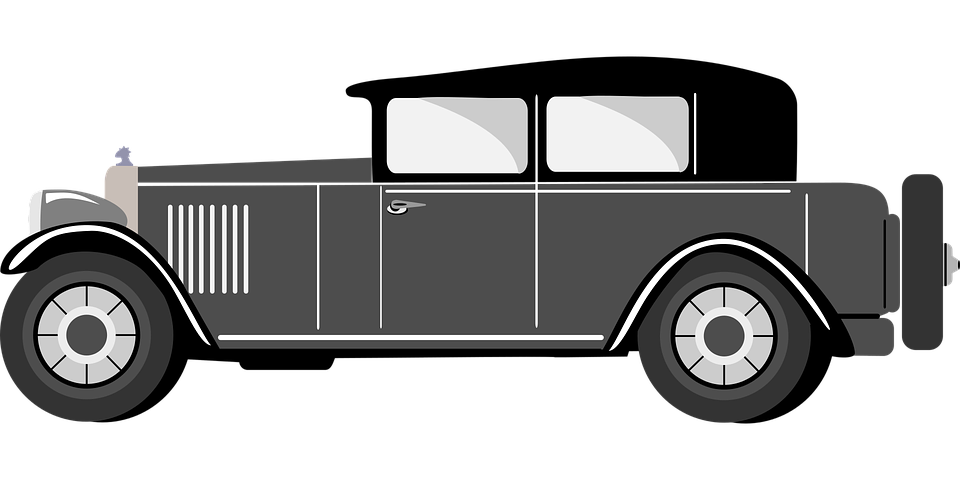


Mobile users:
For best results, view in Landscape mode.
Chrysler:
In 1925, Chrysler was founded by Walter Chrysler,
when the Maxwell Motor Company was re-organized into
the Chrysler Corporation.
In late 1923 production of the Chalmers automobile was ended.
Then in January 1924, Walter Chrysler launched an
eponymous automobile.
Chrysler has had a tumultuous history as the third-largest
of Detroit’s auto companies.
Known in the years after World War II for its well-engineered cars,
it has spent the last three decades bouncing between highs
and lows.
The company encountered financial turbulence in the late 1970s
that prompted it to seek a Congressional bailout, a process that
vaulted its chief executive, Lee A. Iacocca, to national prominence.
Chrysler paid off the loans early in the 1980s, when it enjoyed
success thanks to its minivans and a family of fuel-efficient
autos called the K-cars.
Oldsmobile:
In 1897, Olds Motor Vehicle Co. was
founded by Ransom E. Olds.
After the company moved from Lansing to Detroit in 1900,
a fire destroyed all of its cars except its small, one-cylinder
curved-dash model. Light, reliable and relatively powerful, the
curved-dash Oldsmobile ( when the Oldsmobile name was first used)
became a commercial sensation after appearing at the
New York Auto Show in 1901.
Olds returned to Lansing in 1902 and began large-scale
production of the car.
The curved-dash Oldsmobile was the first American car to
be produced using the progressive assembly-line system,
and the first to become a commercial success.
In 1904, Olds left to found the Reo Motor Car
Company (for his initials, R.E.O.).
After his departure, Oldsmobile struggled, and in 1908 it
was taken over by the new General Motors (GM) company.
By the 1920's, Oldsmobile’s six- and 8-cylinder models sat in the
middle of GM’s lineup, less expensive than Buick
or Cadillac, but still comfortably ahead
of Chevrolet.
Oldsmobile introduced the “safety automatic transmission” in 1938,
a precursor to the 1940’s “Hydra-Matic,” which was the first
successful fully automatic transmission.
The 135-horsepower “Rocket” engine, introduced in the new
88 model in 1949, made Oldsmobile one of the world’s top
performing cars. In 1961, with the release of the
upscale compact F-85 (powered by a V-8 engine),
Oldsmobile launched its Cutlass, which would
become one of the industry’s longest running
and most successful names.
And the Cutlass Supreme would reign as the best-selling American
car for much of the 1970's and early 1980's.
Plymouth:
In 1928, the Plymouth automobile was introduced.
It was Chrysler Corporation's first entry in the low-priced field,
which at the time was already dominated by Chevrolet and Ford.
Plymouths were initially priced higher than the competition,
but offered standard features such as internal expanding
hydraulic brakes that Ford and Chevrolet did not provide.
Plymouths were originally sold exclusively through Chrysler
dealerships, offering a low-cost alternative to the upscale
Chrysler-brand cars.
With Walter Chrysler’s comment “Give the
public something better and the public will buy,” the first Plymouth
car was made that year.
By the time the year was out, 58,000 Plymouths had been shipped.
To meet demand a new Plymouth plant was begun on
40 acres of Detroit real estate in October,
1928, to be completed in 1929.
The origins of Plymouth can be traced back to the Maxwell automobile.
When Walter P. Chrysler took over control of the troubled
Maxwell-Chalmers car company in the early 1920's,
he inherited the Maxwell as part of the package.
After he used the company's facilities to help create and launch
the 6-cylinder Chrysler automobile in 1924, he decided to
create a lower priced companion car.
So for 1926, the Maxwell was reworked and
rebadged as the low-end four-cylinder
Chrysler "52" model.
In 1928, the "52" was once again redesigned to create
the Chrysler-Plymouth Model Q.The "Chrysler" portion of
the nameplate was dropped with the introduction
of the Plymouth Model U in 1929.
